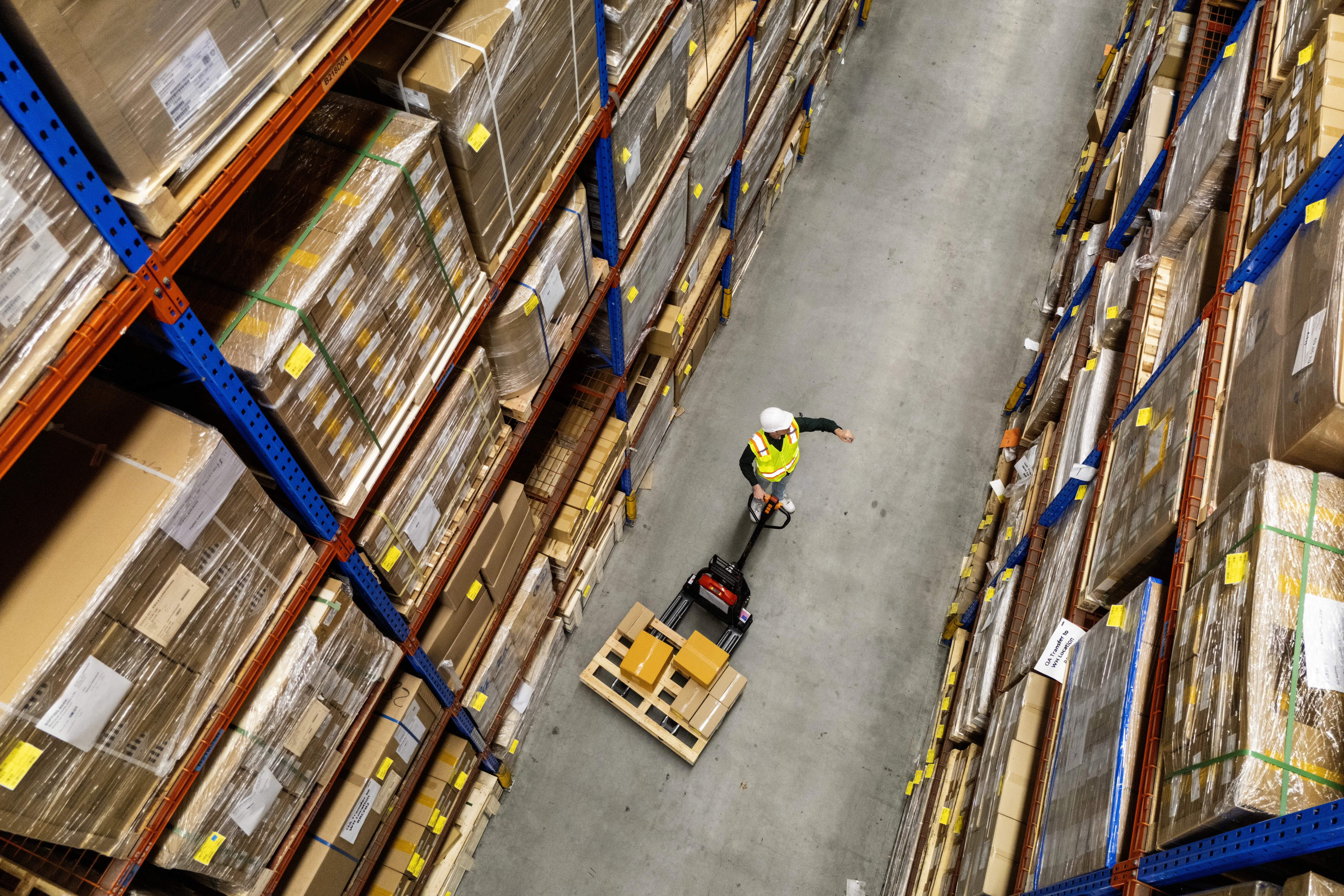AI-powered warehousing: how intelligent fulfillment hubs are re-shaping supply chains
Warehouses are no longer passive storage facilities. They’re evolving into AI-powered command centers that anticipate demand, orchestrate robotics and enable faster, greener fulfillment.

The role of the warehouse in the supply chain has undergone a seismic shift over the past few years. The modern warehouse has transformed from a passive, centralized holding area where goods often waited inefficiently, into the nerve center of the supply chain.
Warehouses are now required to orchestrate inventory, labor, robotics and transportation flows with unprecedented speed and accuracy, driven by expedited delivery expectations, omnichannel fulfillment and e-commerce demands.
The shift is profound: moving from manual, linear operations to AI-powered, autonomous ecosystems. The winners will be those who transform warehousing into a living, intelligent organism that learns, adapts and accelerates fulfillment at the pace of demand.
The AI-enabled warehouse: from manual to intelligent ecosystems
Traditional warehouse management systems (WMS) provided visibility but not adaptability. Constant manual interventions were required to reconcile discrepancies, adjust labor schedules and reactively respond to demand ebbs and flows.
With AI integration, decisions evolve from reactive to proactive, powered by predictive and autonomous intelligence. Key transformations include:
- Real-Time Inventory Intelligence: AI enables continuous visibility into stock level and location via internet of things (IoT) sensors, RFID and computer vision. This reduces reliance on manual cycle counting and mitigates inventory lag.
- Autonomous Robotics: Autonomous Mobile Robots (AMRs) utilize AI to navigate aisles, pick items and sort with greater speed and accuracy than human labor alone.
- Predictive Maintenance: Algorithms anticipate equipment failure before it occurs, ensuring uptime during peak seasons.
- Dynamic Layout Optimization: Reduced travel time and maximized throughput using AI to optimize material flow.
The result: an intelligent supply chain ecosystem where the warehouse proactively thinks and orchestrates insights with traditional automation that is currently being utilized throughout warehouses.
Eliminating stock uncertainty with predictive inventory intelligence
Inventory mismanagement due to overstock, stockouts and lost sales is one of the costliest warehouse inefficiencies. AI solves problems before they happen with data-driven foresight:
- Real-Time Stock Tracking: Ensure accuracy in every order and reduce inventory discrepancies by over 90% with computer vision and IoT sensors.
- Predictive Demand Forecasting: Anticipate shifts before they occur by using machine learning to analyze seasonal trends, weather, promotions and even social media sentiment.
- Automated Replenishment: Dynamically choose suppliers based on pricing, lead time and reliability when triggering reorders.
For executives, this means fewer emergency shipments, lower carrying costs and a supply chain that stays in lockstep with customer demand.
Autonomous fulfillment: precision, speed and customer promise
Fulfillment has always been the pressure point of warehouse operations. The rise of robotics and AI orchestration now makes true autonomy possible:
- Robotic Picking Systems: AI-powered robots navigate complex aisles, recognize items and execute picks with near-perfect accuracy.
- Automated Sortation & Packaging: Intelligent conveyor systems enhance traditional automation, streamlining packing, minimizing material waste and ensuring order accuracy.
- Informed Distribution Decisions: AI creates the most efficient fulfillment decisions by matching orders to the best shipping cost, customer location and delivery promise.
AI and the workforce: augmenting people, not replacing them
The most misunderstood and variable aspect of warehousing is labor. AI is not about removing people; it is about elevating and empowering them.
- Labor Forecasting: AI dynamically schedules staff to prevent shortages and overtime costs.
- Wearables: Employees equipped with AI-driven augmented reality or smart wearables move more efficiently and more safely via hands-free devices and optimized pick paths.
- Cobots (Collaborative Robots): Cobots assist the human workforce by taking over repetitive and menial tasks, freeing humans to focus on problem solving and exception handling.
This creates a workforce that is smarter, faster and more engaged, with lower attrition and higher job satisfaction.
Sustainability through smart warehousing
AI is also reshaping warehousing through the lens of sustainability:
- Energy use is optimized via AI-controlled HVAC and lighting systems tied to real-time occupancy.
- Packaging waste is reduced through AI-driven design of material usage.
- Carbon footprints shrink as AI consolidates orders and reduces unnecessary movement.
For companies balancing profit with sustainability commitments, the AI-powered warehouse is not only efficient, but also responsible.
The future of warehousing: self-learning fulfillment networks
The warehouse of the future will not be managed, it will manage itself. With advancements in generative AI and agent-based orchestration, we will see:
- Self-Learning Layouts that adapt quickly to demand changes to improve short-term inventory accuracy without redesigns.
- Drone-Based Inventory Audits that remove the need to manually count entirely
- Autonomous Fulfillment Networks allow orchestration of inventory, robotics and human labor across multiple sites in real time.
The warehouse is no longer a fixed facility but instead becomes a constantly updating organism; a dynamic, autonomous hub driving global commerce.


